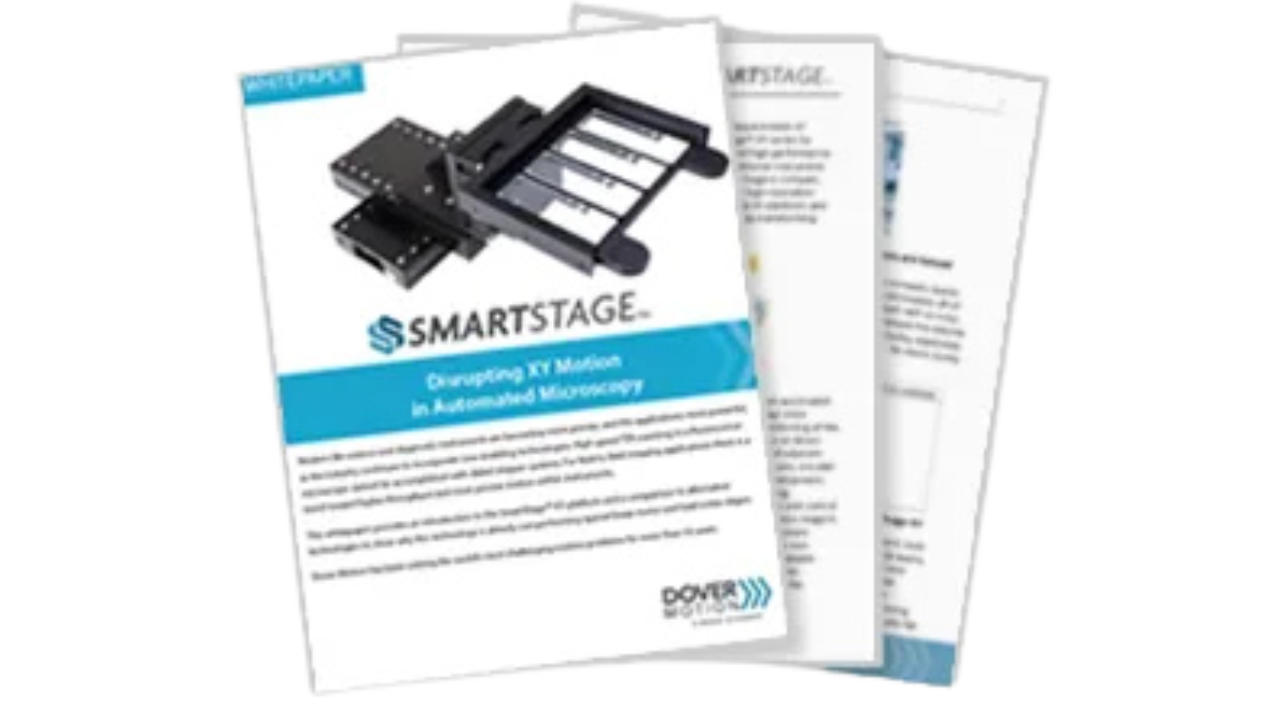Lead Screws and Ball Screws
Despite the recent trend toward the use of linear motors, lead screw and ball screw remain the most popular and cost-effective choice in many applications.
A careful consideration of the various types of leadscrews, together with their strengths and weaknesses, can lead to optimal choices when configuring a system. Dover stages are offered with three basic types of lead screws; in each case, axial movement is constrained by a suitably chosen duplex angular contact bearing at one end of the lead screw.
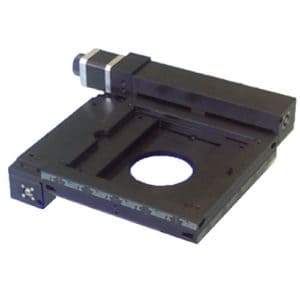
The standard Dover lead screw provides very high repeatability, with a useful balance between compactness, stiffness, and speed. It is offered in two diameters (12 and 18 millimeter), two thread accuracy classes, and a variety of Imperial and metric leads. It achieves its high repeatability via an anti-backlash mechanism (Figure 23), in which the nut body is cut into four flexural segments, which are radially spring loaded via a circumferential spring. This design achieves a unidirectional repeatability of less than one micron; a uniform, well damped torque of 30 to 120 milli-Newton-meters (depending on lead and diameter); and an axial stiffness of around 2×106 Newtons per meter. The nut is quite compact, with an overall length of less than 25 millimeters, but its lower stiffness may make it less appropriate for closed loop control with linear encoders. The standard Dover lead screw and nut are compact and cost-effective, provide very high repeatability, and are best used with light to moderate loads and duty cycles, at speeds of up to 900 rpm (15 rps).
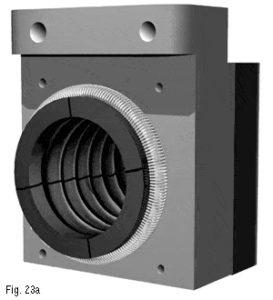
Figure 23a – The Dover Friction Nut
For applications that require higher accuracy, we offer a range of lead screws manufactured by Universal Thread-grinding. These also use an anti-backlash nut, which is longer and stiffer than the standard Dover nut. Due to the metal-to-metal contact inherent in this design, periodic lubrication is required, and the speed range is limited to 1200 rpm and below. The principal attribute of this lead screw and nut is very high accuracy, both over full travel and over each revolution (periodic error). The torque variations are also quite low, permitting uniform scanning speeds to be achieved. Stiffness is roughly 5×106 Newtons per meter, and torque is around 60 milli-Newton-meters.
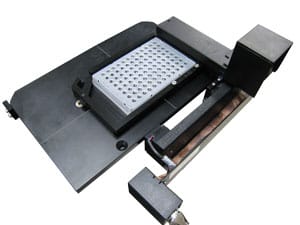
In applications that require either high speeds, a high duty cycle, or both, a ballscrew is the best choice. Ballscrews use recirculating balls to couple the nut to the screw, and eliminate backlash through the elastic preloading of oversize balls. In addition to their suitability for high speeds and duty cycles, ballscrews are much stiffer than anti-backlash lead screws and nuts, and can achieve stiffnesses of 5×107 Newtons per meter. To estimate the natural frequency for a given axis, the stiffnesses of the nut, duplex bearing, nut mount, bearing mounts, and the column stiffness of the lead screw itself must be taken into account. Simply maximizing the stiffness may not be optimal, as there may be a trade-off between stiffness and thermal expansion due to frictional heating. Due to the entry and exit of balls into the preloaded region, torque uniformity of ball screws is not as smooth as with a conventional anti-backlash design. Most ball screw torques are in the 60 to 150 milli-Newton-meter range. We offer ball screws in three leads: 2 millimeters, for high resolution; 5 millimeters, for most applications; and 10 millimeters, for high-speed applications.
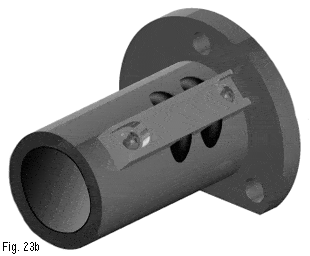
Figure 23b – Ball Nut

